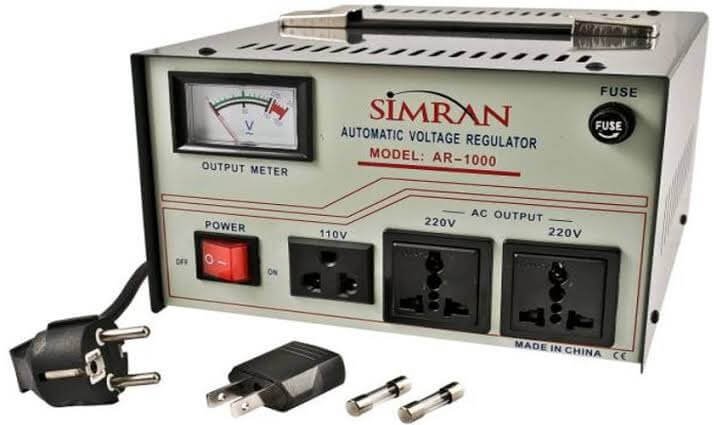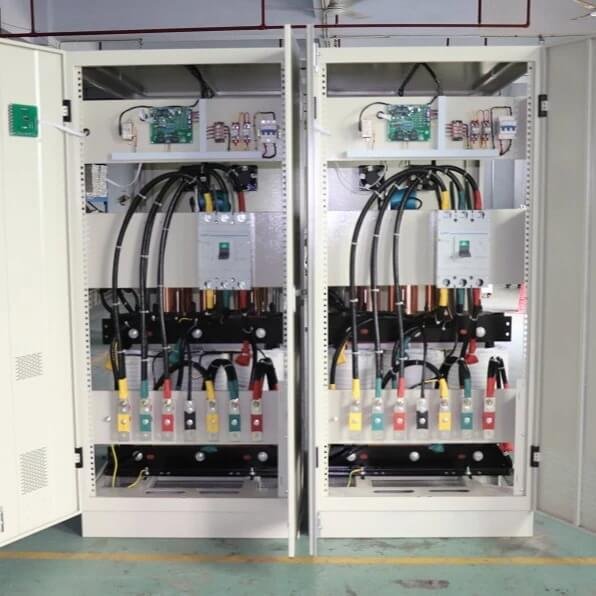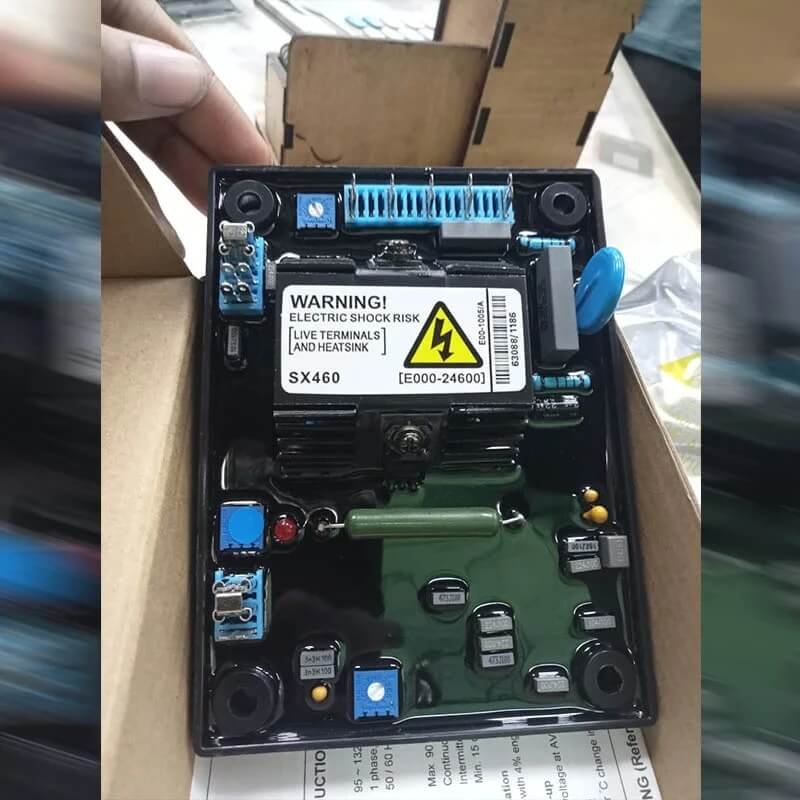Power stability is one of the biggest challenges facing industrial facilities and commercial operations in East Africa. Voltage fluctuations can destroy sensitive equipment, stop production and cause costly downtime. The automatic voltage regulator is the foundation technology for power system integrity but many professionals underestimate its operational complexity and strategic deployment.
Modern infrastructure requires precise voltage control beyond basic regulation. Today’s industrial environment has more sensitive electronic loads, variable frequency drives and computerized control systems that require stable power within tight margins. Understanding the mechanics of automatic voltage regulation is key for engineers designing robust power systems that can withstand the challenges in our regional power grid.

Understanding Automatic Voltage Regulator Fundamentals
The answer to the question of what is automatic voltage regulation brings us into the complicated world of power electronics and control theory. An automatic voltage regulator functions as an intelligent control device that continuously monitors system voltage levels and implements real-time corrections to maintain predetermined setpoints. This technology works by means of advanced feedback mechanisms that sense voltage discrepancies and make corresponding corrections within a twinkling of an eye faster than human operator would ever do.
The conventional voltage control techniques were very dependent on manual control and mechanical switching equipment. Such methods were not suitable to be applied in modern industrial practice where the change in the voltage by several percentages may cause the malfunction of the equipment or its protective shutdown. The evolution toward automatic voltage regulators represents a fundamental shift in power system management philosophy, emphasizing proactive control rather than reactive responses.
Contemporary automatic voltage regulator designs incorporate microprocessor-based control algorithms that analyze multiple system parameters simultaneously. These instruments do not just detect the level of voltage but also the changes in frequency, the level of harmonic distortion and the load properties. Such an inclusive strategy helps make smarter regulatory choices that take into account the bigger electrical landscape as opposed to just voltage amplitude.
Key Components and Architecture
Modern automatic voltage regulators integrate several critical subsystems working in coordinated fashion. The sensing circuit also constantly reads the system voltage with high-precision instruments that are calibrated to industrial accuracy. This measurement information is inputted into the control processor that compares actual value with reference values set and generates the necessary correction signals.
The most demanding part of regulator design is its power stage. Such a section should be able to drive large current levels as well as high control resolution. Higher-end designs use semiconductor-based switching devices with high frequency switching capabilities to provide fast response times, but avoid excess electrical noise on the system.
Another necessity is protection circuits that protect the regulator as well as other equipment against abnormal conditions. Such systems watch against overcurrent conditions, thermal stress, and input power quality problems that may affect regulator operation, or adversely impact downstream equipment.
How Automatic Voltage Regulators Operate

The question of how does a voltage regulator work cannot be answered without touching the topic of advanced control algorithms that drive up-to-date regulator behavior. The overall idea is to constantly compare the values of measured voltages with the reference points. In the case that deviations are measured, the control system will compute suitable correction signals and apply them to the power stage electronics.
The continuous sensing phase provides system voltage samples hundreds or thousands of times per second. This fast monitoring allows even short-term disturbances in the voltage to be detected which would otherwise be missed but could still affect sensitive equipment. Digital signal processing techniques are used to filter noise in the measurement without loss of important transient information required to make accurate decisions in regulation.
Control algorithms are forced to trade off a number of competing objectives. Quick reaction to voltage changes is incompatible with system stability demands, because excessively vigorous compensation may cause oscillations or hunting. The modern regulators use adaptive control strategy where the regulator alters response characteristics with respect to system conditions and the pattern of load behavior.
Response Time Characteristics
The speed at which an automatic voltage regulator responds to disturbances directly impacts its effectiveness in protecting connected equipment. Traditional electromechanical regulators required several seconds to implement corrections, leaving equipment vulnerable during transient events. Electronic regulators achieve response times measured in milliseconds, providing protection against fast-changing disturbances common in industrial environments.
However, extremely fast response can create its own problems. Instantaneous corrections to minor voltage fluctuations may cause unnecessary stress on power system components and introduce unwanted interactions with other control devices. Optimal regulator tuning requires careful consideration of system dynamics and load characteristics to achieve the best balance between responsiveness and stability.
Load-dependent response strategies represent an advanced feature found in premium automatic voltage regulator designs. These systems analyze load patterns and adjust their response characteristics accordingly. During light load conditions, the regulator may operate with faster response times since system stability margins are typically higher. Under heavy load situations, more conservative response settings prevent potential instability issues.
Technical Specifications and Performance Parameters
Professional evaluation of automatic voltage regulators requires understanding key performance metrics that determine suitability for specific applications. Regulation accuracy represents the primary specification, typically expressed as a percentage of rated voltage. Industrial applications generally require regulation accuracy of ±1% or better, while critical processes may demand even tighter tolerances.
Input voltage range defines the span of supply voltage variations that the regulator can accommodate while maintaining proper output regulation. Wide input ranges provide greater flexibility but often come with trade-offs in efficiency or regulation accuracy. Engineers must carefully match input voltage specifications to the characteristics of their local power supply infrastructure.
Response time specifications vary significantly among different regulator technologies. Electronic regulators typically achieve response times under 20 milliseconds for load changes, while electromechanical units may require several seconds. The choice between technologies depends on the sensitivity of connected equipment and the nature of expected disturbances.
Efficiency and Thermal Considerations
Energy efficiency has become increasingly important as organizations seek to minimize operating costs and reduce environmental impact. Modern automatic voltage regulators achieve efficiencies exceeding 95% under typical operating conditions. However, efficiency varies with load level and input voltage conditions, making it essential to evaluate performance across the expected operating range.
Thermal management directly impacts regulator reliability and service life. Electronic components generate heat that must be dissipated effectively to prevent premature failure. Proper installation requires adequate ventilation and may necessitate forced air cooling in high-temperature environments common in industrial facilities.
Power factor correction capabilities represent an additional consideration for many applications. Some automatic voltage regulator designs incorporate power factor correction circuits that can improve overall system efficiency while providing voltage regulation. This dual functionality can justify higher initial costs through reduced energy consumption and improved power quality.
Application Considerations for Industrial Environments
Selecting appropriate automatic voltage regulation technology requires thorough analysis of application-specific requirements. Industrial facilities present unique challenges including harsh environmental conditions, diverse load types, and varying power quality issues. The regulator must function reliably despite temperature extremes, humidity, dust, and vibration commonly encountered in manufacturing environments.
Motor-driven equipment represents a particularly demanding application for voltage regulators. Motor starting currents can be five to seven times normal operating current, creating significant voltage dips that affect other connected equipment. An automatic voltage regulator serving motor loads must handle these transient conditions without nuisance tripping or regulation instability.
Variable frequency drives and other nonlinear loads introduce harmonic distortion that can interfere with regulator operation. Modern regulators incorporate filtering circuits to minimize harmonic effects, but installation planning must still consider the cumulative impact of multiple nonlinear loads on system power quality.
Integration with Existing Systems
Successful automatic voltage regulator implementation requires careful integration with existing electrical systems and control architectures. Communication protocols enable remote monitoring and control capabilities that align with modern facility management practices. Many regulators support standard industrial protocols allowing integration with supervisory control and data acquisition systems.
Protective device coordination becomes critical when adding voltage regulation equipment to existing installations. The regulator’s protective functions must coordinate properly with upstream and downstream protective devices to ensure proper fault clearing without unnecessary service interruptions. This coordination requires detailed analysis of system fault characteristics and protective device settings.
Maintenance accessibility represents another practical consideration often overlooked during initial planning. Regulators require periodic inspection and maintenance to ensure continued reliable operation. Installation locations must provide adequate access for service personnel while maintaining safety clearances and environmental protection.
Future Trends and Technological Developments
The evolution of automatic voltage regulator technology continues advancing rapidly, driven by increasing demands for power quality and system reliability. Digital control platforms enable more sophisticated algorithms that can adapt to changing system conditions and optimize performance automatically. Machine learning techniques show promise for predicting system behavior and preventing problems before they occur.
Grid integration capabilities are becoming increasingly important as distributed energy resources become more common. Modern regulators must coordinate with solar inverters, energy storage systems, and other distributed resources to maintain overall system stability. This coordination requires advanced communication capabilities and sophisticated control algorithms.
Smart grid initiatives are driving demand for regulators with enhanced monitoring and communication capabilities. These devices serve not only local voltage regulation functions but also provide valuable data for system optimization and planning purposes. The ability to share operational data across utility networks enables more efficient overall system management.
Conclusion

The automatic voltage regulator is an essential component in modern electrical systems, precision control for industrial operations. Understanding how automatic voltage regulation works allows engineers to make informed decisions on technology and implementation. What does a voltage regulator do? goes beyond just voltage control – these devices are intelligent guardians of your investment and continuity of operations.
As East African industries grow and modernize, the demand for electrical infrastructure grows with it. Power quality challenges in developing electrical grids make automatic voltage regulators a must have for any serious industrial operation. The technology is evolving to smarter and more capable systems and will bring even more benefits to future installations.
IET has over 75 years of electrical engineering expertise to help East African industries navigate these power quality challenges. Our portfolio of power transmission and distribution solutions includes automatic voltage regulator technologies specifically designed for the region. With offices in Kenya, Uganda and Tanzania, our team has the local knowledge and technical expertise to implement voltage regulation solutions that will protect your critical operations. Contact IET today to see how our proven power quality solutions can improve your facility’s electrical reliability and performance.

Leave a Reply